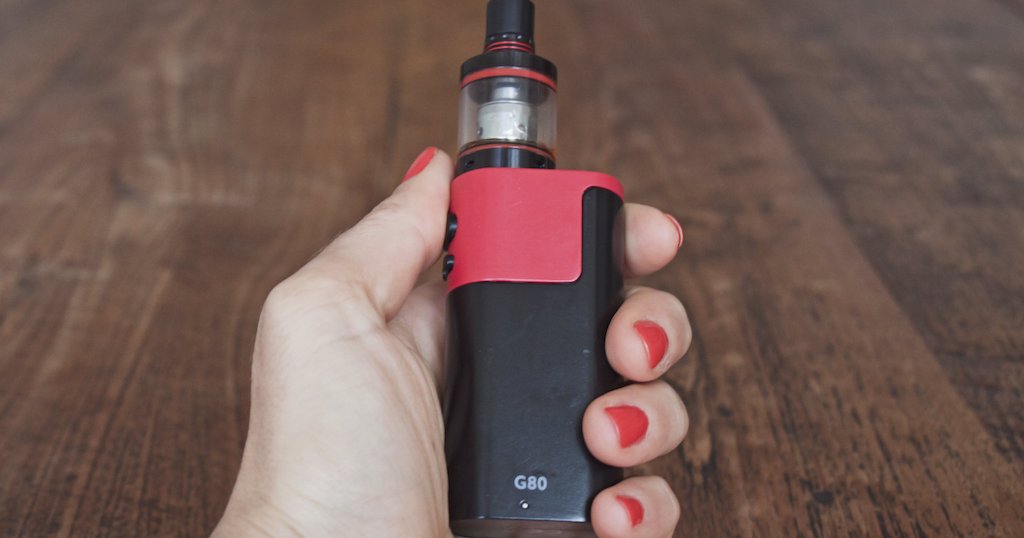
What percentage of people die from vaping?
Nov 12, 2020 · Only 23.3% (95% CI, 15.0%–31.6%) of current e-cigarette users reported vape-free homes. The percentage of adults who reported vape-free home rules was higher among respondents living with children younger than 18 years (87.6%; 95% CI, 85.7%–89.5%) than among those not living with children younger than 18 years (81.9%; 95% CI, 80.3%–83.5%).
How much does the average person vape?
Dec 13, 2019 · 8 th grade: 3.9%. 10 th grade: 12.6%. 12 th grade: 14%. The number of seniors who reported vaping marijuana during the past month increased from 7.5% in 2018 to 14% in 2019. This is the second largest one-year jump for any substance in the 45-year survey history, behind past month nicotine vaping (2017 to 2018). Daily marijuana vaping.
What percentage of people have illegal guns?
Apr 07, 2022 · For instance, predictions from 2019 aimed at the sum of $29.39 billion by 2022. Projections from last year, however, reveal a more realistic sum of $24.5 billion reached by 2027. 11. Vape statistics recorded a 122.2% increase in vaping product sales from 2014 to May 2020.
What percentage of people have absolute pitch?
Among people aged 12 or older in 2020: 20.7% (or about 57.3 million people) reported using tobacco products or vaping nicotine in the past 30 days. 15.0% (or about 41.4 million people) reported smoking cigarettes in the past 30 days.

Can 0 nicotine vape harm you?
Do people vape 0mg?
How many people Vaped 2021?
What are 2 Statistics of vaping?
Does 0% vape juice have nicotine in it?
Does 0 NIC vape juice have nicotine?
Why do teens vape?
How popular is vaping?
In 2018, 14.9% of adults had ever used an electronic cigarette (e-cigarette), and 3.2% were current e-cigarette users. The prevalence of adults who had ever used an e-cigarette and were current users was highest among men, non-Hispanic white adults, and those aged 18–24.
Why do teens smoke?
What are 5 dangers of vaping?
- Rapid onset of coughing.
- Breathing difficulties.
- Weight loss.
- Nausea and vomiting.
- Diarrhea.
What should I do if my teenager is vaping?
- Reason with your child. Have an honest discussion about the effects of vaping and how this type of addiction can lead to other substance abuse. ...
- Be present. ...
- Talk, don't punish. ...
- Appeal to their desire for independence. ...
- Equip them with support and resources.
What are 5 negative effects of vaping?
...
Coughing, dry throat, headaches
- coughing.
- dry mouth and throat.
- shortness of breath.
- mouth and throat irritation.
- headaches.
Key Findings
Summary
- In 2018, 14.9% of adults aged 18 and over had ever used an e-cigarette, and 3.2% of adults were current e-cigarette users. Those who had ever used an e-cigarette and those who were current users were more likely to be men compared with women, aged 18–24 compared with older ages, and non-Hispanic white adults compared with Hispanic, non-Hispanic black, or non-Hispanic Asi…
Definitions
- E-cigarette use: “Ever used an e-cigarette” was based on a positive response to the survey question, “Have you ever used an e-cigarette, even one time?” Respondents were categorized as “Current e-cigarette users” based on the responses “every day” or “some days” to a follow-up question that asked, “Do you now use e-cigarettes every day, some days, or not at all?” Cigarette …
Data Source and Methods
- Data from the 2018 NHIS were used for this analysis. NHIS is a nationally representative, household survey of the civilian noninstitutionalized U.S. population. It is conducted continuously throughout the year by the National Center for Health Statistics (NCHS). Questions about e-cigarette use were introduced in the 2014 NHIS (6). Data for this analysis come from the Family …
References
- Creamer MR, Wang TW, Babb S, Cullen KA, Day H, Willis G, et al. Tobacco product use and cessation indicators among adults—United States, 2018external icon. MMWR Morb Mortal Wkly Rep 68(45):1013–19....
- National Center for Chronic Disease Prevention and Health Promotion. E-cigarette use among youth and young adults. A report of the Surgeon Generalpdf iconexternal icon. 2016.
- Creamer MR, Wang TW, Babb S, Cullen KA, Day H, Willis G, et al. Tobacco product use and cessation indicators among adults—United States, 2018external icon. MMWR Morb Mortal Wkly Rep 68(45):1013–19....
- National Center for Chronic Disease Prevention and Health Promotion. E-cigarette use among youth and young adults. A report of the Surgeon Generalpdf iconexternal icon. 2016.
- National Center for Chronic Disease Prevention and Health Promotion. Outbreak of lung injury associated with the use e-cigarette, or vaping, products.
- Wang TW, Asman K, Gentzke AS, Cullen KA, Holder-Hayes E, Reyes-Guzman C, et al. Tobacco product use among adults—United States, 2017. MMWR Morb Mortal Wkly Rep 67(44):1225–32. 2018.
Suggested Citation
- Villarroel MA, Cha AE, Vahratian A. Electronic cigarette use among U.S. adults, 2018. NCHS Data Brief, no 365. Hyattsville, MD: National Center for Health Statistics. 2020.